INSPIRING AND EMPOWERING FINANCIAL LITERACY FOR TEENS AND YOUNG ADULTS
As a parent, educator, or financial advisor in Ontario, it’s essential to recognize the importance of financial literacy for teens and young adults. In today’s complex financial landscape, equipping the younger generation with the knowledge and skills to manage their finances effectively is crucial for their future success. In this article, we’ll delve into the world of financial literacy, exploring its significance, benefits, and practical strategies for empowering teens and young adults.
THE IMPORTANCE OF FINANCIAL LITERACY
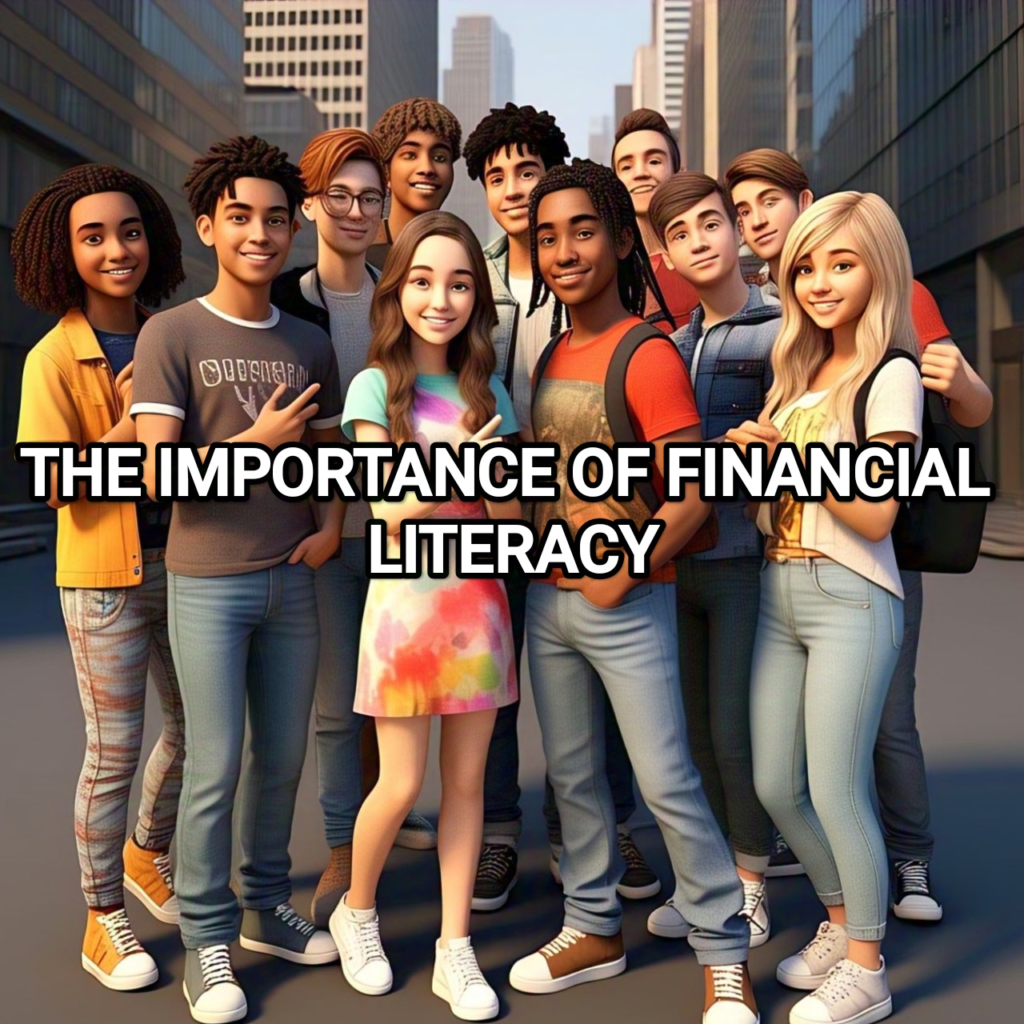
Financial literacy is the ability to understand and manage personal finances effectively, making informed decisions about earning, saving, investing, and spending. It is a vital skill that plays a crucial role in ensuring the financial well-being and stability of individuals, particularly teens and young adults. It encompasses a range of knowledge and skills, including understanding financial concepts, managing debt, investing, and planning for the future. In this section, we’ll delve into the importance of financial literacy, its benefits, and why it’s essential for teens and young adults to develop this skill.
In Canada, financial literacy is a growing concern, with many teens and young adults lacking the necessary knowledge and skills to navigate the complex financial system. According to a report by the Financial Consumer Agency of Canada (FCAC), many Canadians struggle with debt, savings, and financial planning, highlighting the need for improved financial literacy.
WHY FINANCIAL LITERACY MATTERS
1. Informed Decision-Making: Financial literacy empowers individuals to make informed decisions about their financial resources. By understanding financial concepts, individuals can evaluate options, weigh risks, and make choices that align with their goals. This skill is particularly important for teens and young adults, who are likely to face numerous financial decisions, such as choosing a college, managing student loans, and entering the workforce.
2. Financial Stability: Financial literacy is essential for achieving financial stability. By managing debt, creating budgets, and investing wisely, individuals can build a stable financial foundation. This foundation is critical for withstanding financial shocks, such as job loss, medical emergencies, or economic downturns. Teens and young adults who develop good financial habits are more likely to achieve long-term financial stability and security.
3. Avoiding Financial Pitfalls: Financial literacy helps individuals avoid common financial pitfalls, such as overspending, debt accumulation, and investment scams. By understanding financial concepts and having a solid financial plan, individuals can navigate the complex financial landscape and avoid costly mistakes. This skill is particularly important for teens and young adults, who may be more susceptible to financial pitfalls due to their limited financial experience.
4. Building Wealth: Financial literacy is critical for building wealth over time. By understanding investing concepts, individuals can make informed decisions about their investments and grow their wealth. Teens and young adults who start investing early can take advantage of compound interest and build a significant nest egg over time.
5. Reducing Financial Stress: Financial literacy can help reduce financial stress and anxiety. By understanding financial concepts and having a plan, individuals can feel more confident and in control of their finances. This reduced stress can have numerous benefits, including improved mental and physical health, better relationships, and increased productivity.
THE CONSEQUENCES OF FINANCIAL ILLITERACY
1. Debt Accumulation: Financial illiteracy can lead to debt accumulation, as individuals may not understand the implications of credit card debt or other forms of borrowing. This debt can quickly spiral out of control, leading to financial distress and even bankruptcy.
2. Financial Instability: Financial illiteracy can lead to financial instability, as individuals may not have a stable financial foundation. This instability can make it difficult to achieve long-term financial goals, such as buying a home, starting a business, or retiring comfortably.
3. Missed Opportunities: Financial illiteracy can lead to missed opportunities, as individuals may not understand the benefits of investing or other financial strategies. This lack of understanding can result in missed chances to build wealth, achieve financial independence, and secure a comfortable retirement.
4. Financial Stress: Financial illiteracy can lead to financial stress and anxiety, as individuals may feel overwhelmed by their financial situation. This stress can have numerous negative consequences, including decreased mental and physical health, strained relationships, and reduced productivity.
THE CURRENT STATE OF FINANCIAL LITERACY AMONG TEENS AND YOUNG ADULTS
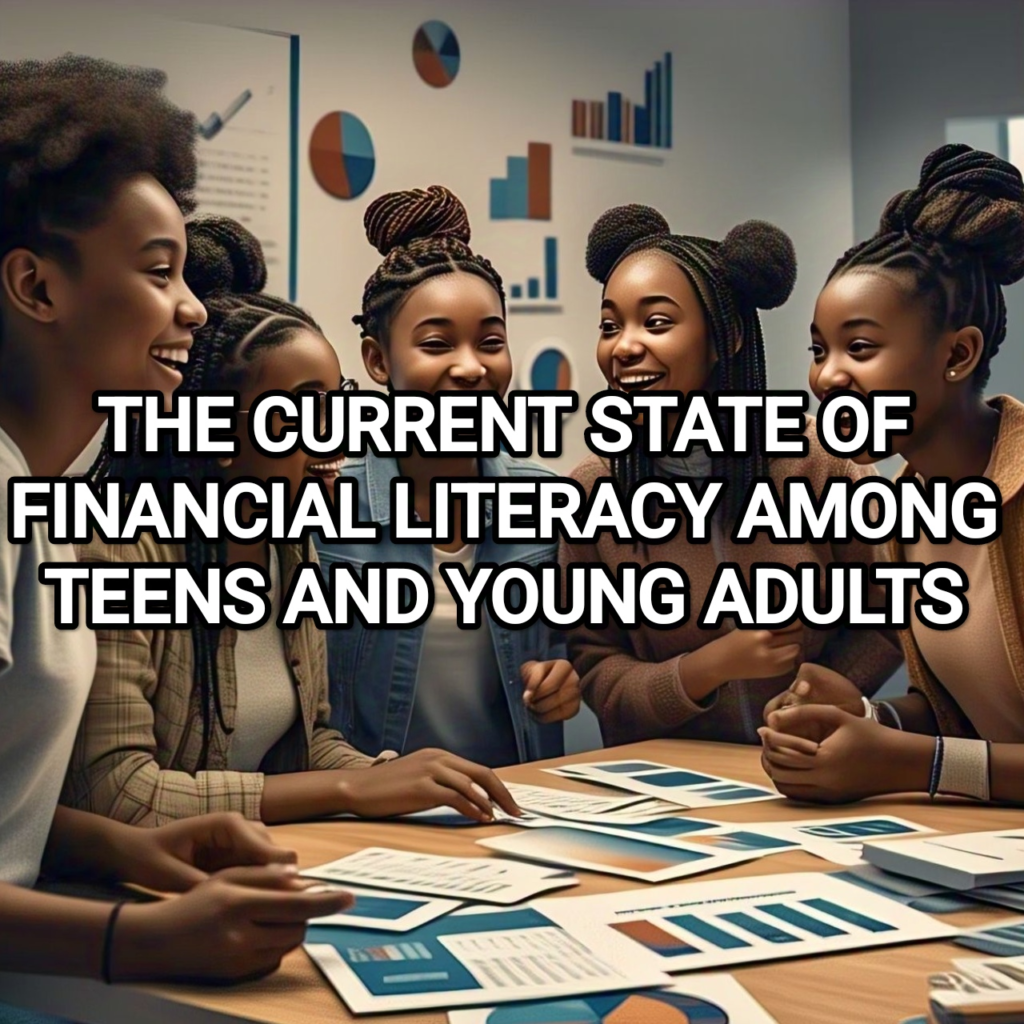
In Canada, the Financial Consumer Agency of Canada (FCAC) has been working to improve financial literacy among Canadians, including teens and young adults. The agency’s national strategy, “Count me in, Canada,” aims to strengthen the financial well-being of Canadians by empowering them to manage money and debt wisely, plan and save for the future, and prevent and protect against fraud and financial abuse.
Despite these efforts, many Canadian teens and young adults still lack basic financial literacy skills. A 2014 survey by the Canadian Financial Capability Survey (CFCS) found that many Canadians have gaps in their financial literacy knowledge and skills, particularly in areas such as budgeting, understanding credit and debt, and financial planning .
In Ontario, there are various initiatives and programs aimed at improving financial literacy among teens and young adults. For example, the Ontario government has implemented financial literacy education in schools, and there are several non-profit organizations offering financial literacy programs and resources for young people.
However, more needs to be done to address the financial literacy gap among Ontario’s teens and young adults. This includes increasing access to financial education and resources, promoting financial literacy in schools and communities, and encouraging parents and caregivers to model healthy financial behaviors.
Some potential solutions to improve financial literacy among Ontario’s teens and young adults include:
– Integrating financial literacy into school curricula: This could include teaching personal finance and money management skills in schools.
– Offering financial literacy programs and resources: Non-profit organizations, community groups, and financial institutions could offer programs and resources to help young people develop financial literacy skills.
– Promoting financial literacy in communities: Community-based initiatives, such as financial literacy workshops and seminars, could help reach young people and their families.
– Encouraging parental involvement: Parents and caregivers could play a critical role in modeling healthy financial behaviors and teaching financial literacy skills to their children.
Overall, improving financial literacy among Ontario’s teens and young adults requires a collaborative effort from governments, non-profit organizations, financial institutions, and community groups. By working together, we can empower young people with the financial knowledge and skills they need to achieve financial stability and success.
BENEFITS OF FINANCIAL LITERACY
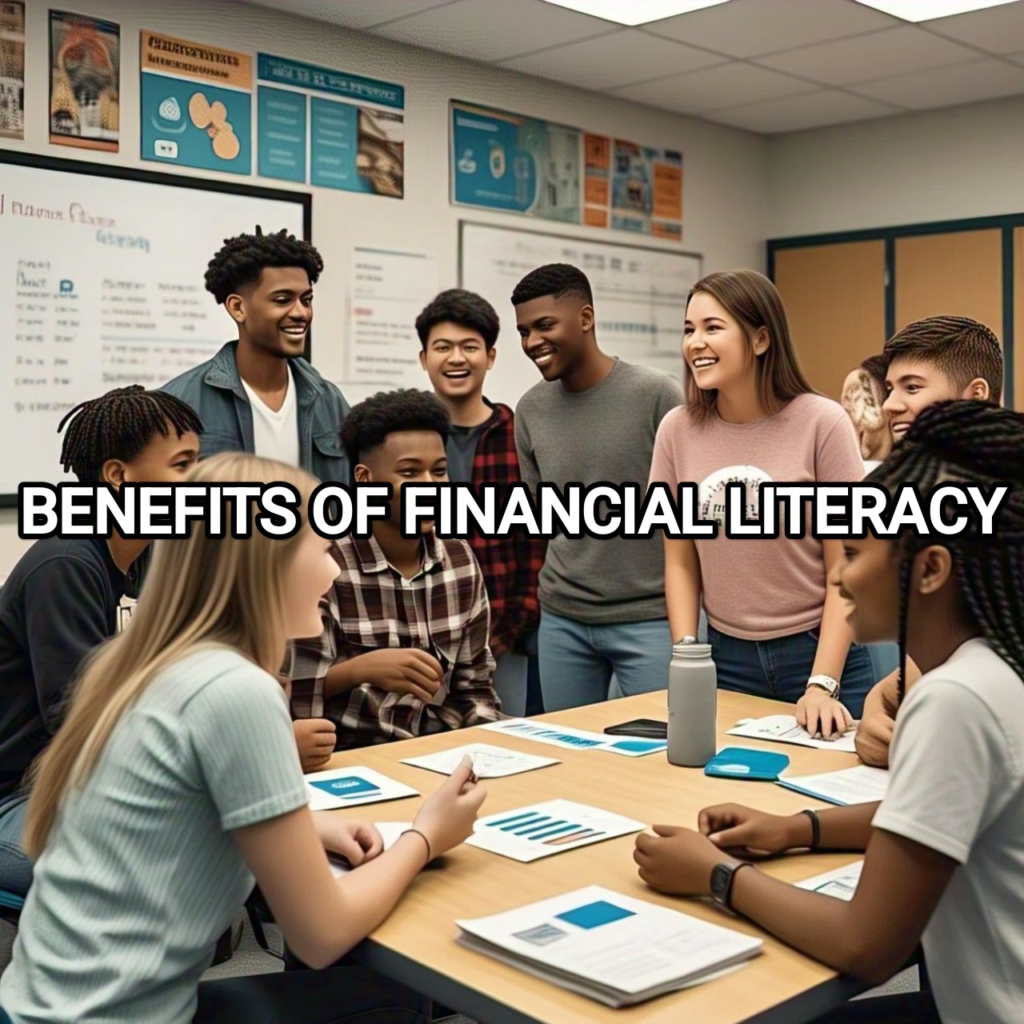
Empowering teens and young adults with financial literacy can have numerous benefits, including:
BENEFITS FOR TEENS AND YOUNG ADULTS
1. Improved Financial Decision-Making: Financial literacy empowers teens and young adults to make informed decisions about their financial resources. By understanding financial concepts, they can evaluate options, weigh risks, and make choices that align with their goals.
2. Increased Financial Independence: Financial literacy enables teens and young adults to take control of their financial lives. By managing their finances effectively, they can achieve financial independence, reduce their reliance on others, and make their own financial decisions.
3. Better Money Management: Financial literacy teaches teens and young adults how to manage their money effectively. By creating budgets, tracking expenses, and saving for the future, they can achieve financial stability and security.
4. Reduced Financial Stress and Anxiety: Financial literacy can help reduce financial stress and anxiety among teens and young adults. By understanding financial concepts and having a plan, they can feel more confident and in control of their finances.
5. Improved Credit Scores: Financial literacy can help teens and young adults establish and maintain good credit scores. By understanding how credit works, they can make informed decisions about credit cards, loans, and other financial products.
6. Increased Financial Opportunities: Financial literacy can increase financial opportunities for teens and young adults. By understanding financial concepts, they can make informed decisions about investments, entrepreneurship, and other financial ventures.
7. Better Financial Planning: Financial literacy enables teens and young adults to plan for their financial futures. By setting financial goals, creating budgets, and investing for the future, they can achieve financial stability and security.
BENEFITS FOR SOCIETY
1. Reduced Financial Instability: Financial literacy can reduce financial instability among teens and young adults. By managing their finances effectively, they can reduce their reliance on others, decrease debt, and increase financial stability.
2. Increased Economic Growth: Financial literacy can increase economic growth by empowering teens and young adults to make informed financial decisions. By investing in education, entrepreneurship, and other financial ventures, they can contribute to economic growth and development.
3. Improved Financial Inclusion: Financial literacy can improve financial inclusion among teens and young adults. By understanding financial concepts, they can access financial services, participate in the economy, and achieve financial stability.
4. Reduced Poverty and Income Inequality: Financial literacy can reduce poverty and income inequality among teens and young adults. By managing their finances effectively, they can increase their income, reduce debt, and achieve financial stability.
5. Increased Financial Stability: Financial literacy can increase financial stability among teens and young adults. By understanding financial concepts, they can reduce their reliance on others, decrease debt, and increase financial stability.
KEY COMPONENTS OF FINANCIAL LITERACY
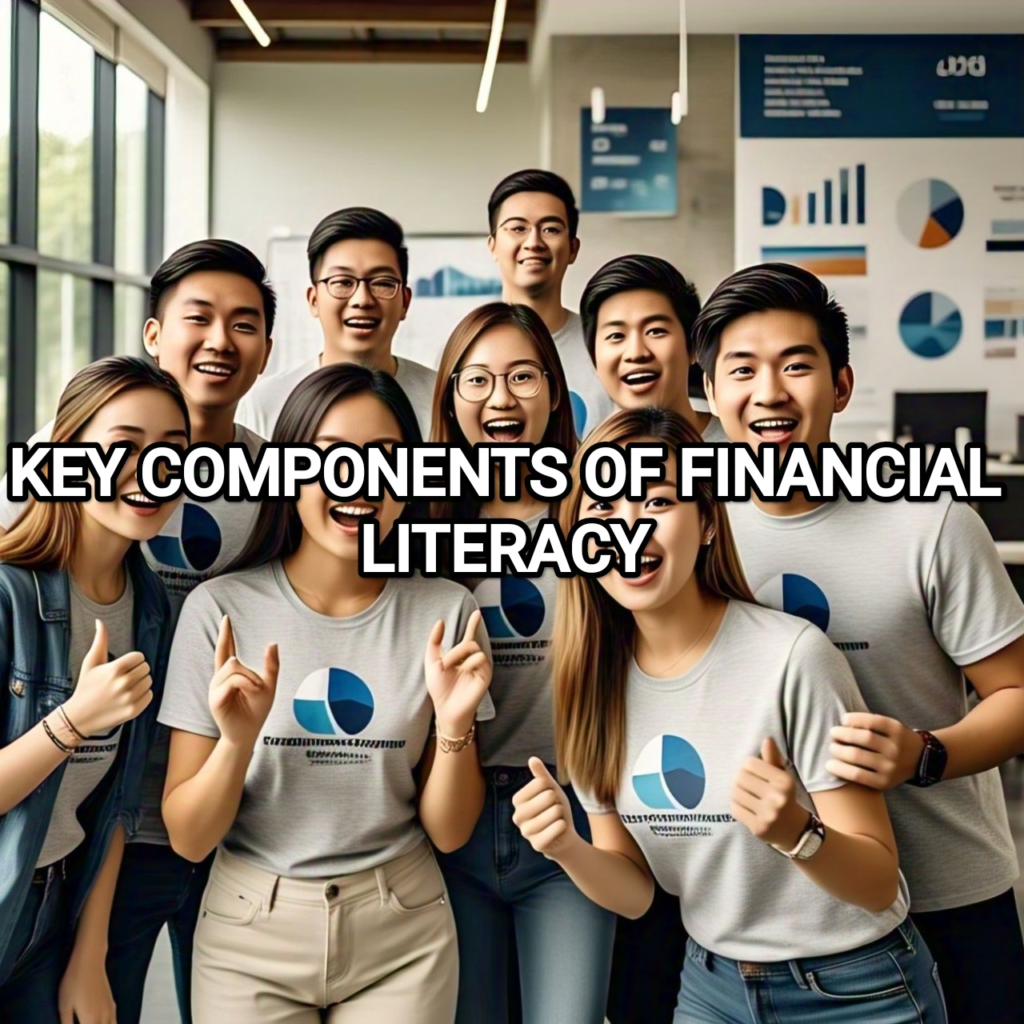
Financial literacy is a vital skill that enables individuals to make informed decisions about their financial resources. In Ontario, Canada, financial literacy is essential for teens and young adults to navigate the complex financial landscape and achieve financial stability and success. In this section, we’ll explore the key components of financial literacy in Ontario, Canada, and how they can be applied to empower teens and young adults.
1. Budgeting and Saving
Budgeting and saving are essential components of financial literacy. Teens and young adults in Ontario, Canada, should understand how to create a budget, prioritize expenses, and save for short-term and long-term goals. This includes understanding the 50/30/20 rule, which allocates 50% of income towards necessary expenses, 30% towards discretionary spending, and 20% towards saving and debt repayment.
2. Understanding Credit and Debt
Understanding credit and debt is critical for teens and young adults in Ontario, Canada. This includes understanding how credit scores work, how to manage credit card debt, and how to avoid predatory lending practices. Teens and young adults should also understand the implications of debt, including the impact on credit scores and financial stability.
3. Investing and Retirement Planning
Investing and retirement planning are key components of financial literacy for teens and young adults in Ontario, Canada. This includes understanding different types of investments, such as stocks, bonds, and mutual funds, and how to create a diversified investment portfolio. Teens and young adults should also understand the importance of starting to save for retirement early, including contributing to Registered Retirement Savings plans (RRSPs) and Tax-Free Savings Accounts (TFSAs).
4. Financial Planning and Goal-Setting
Financial planning and goal-setting are essential components of financial literacy for teens and young adults in Ontario, Canada. This includes understanding how to set financial goals, create a financial plan, and prioritize financial objectives. Teens and young adults should also understand how to use financial tools, such as budgeting apps and spreadsheets, to track their finances and stay on top of their financial goals.
5. Understanding Financial Risks and Protections
Understanding financial risks and protections is critical for teens and young adults in Ontario, Canada. This includes understanding how to manage financial risks, such as inflation, market volatility, and unexpected expenses. Teens and young adults should also understand how to protect their finances, including understanding insurance products, such as life insurance and disability insurance.
6. Financial Independence and Entrepreneurship
Financial independence and entrepreneurship are key components of financial literacy for teens and young adults in Ontario, Canada. This includes understanding how to start and manage a business, including creating a business plan, securing funding, and managing finances. Teens and young adults should also understand how to achieve financial independence, including creating multiple income streams and building wealth.
7. Financial Literacy and Mental Health
Financial literacy and mental health are closely linked. Teens and young adults in Ontario, Canada, should understand how to manage financial stress and anxiety, including creating a budget, prioritizing expenses, and seeking support from financial advisors or mental health professionals.
8. Financial Literacy and Technology
Financial literacy and technology are increasingly intertwined. Teens and young adults in Ontario, Canada, should understand how to use financial technology, including mobile banking apps, online investment platforms, and digital budgeting tools.
WHY FINANCIAL LITERACY IS ESSENTIAL FOR TEENS AND YOUNG ADULTS
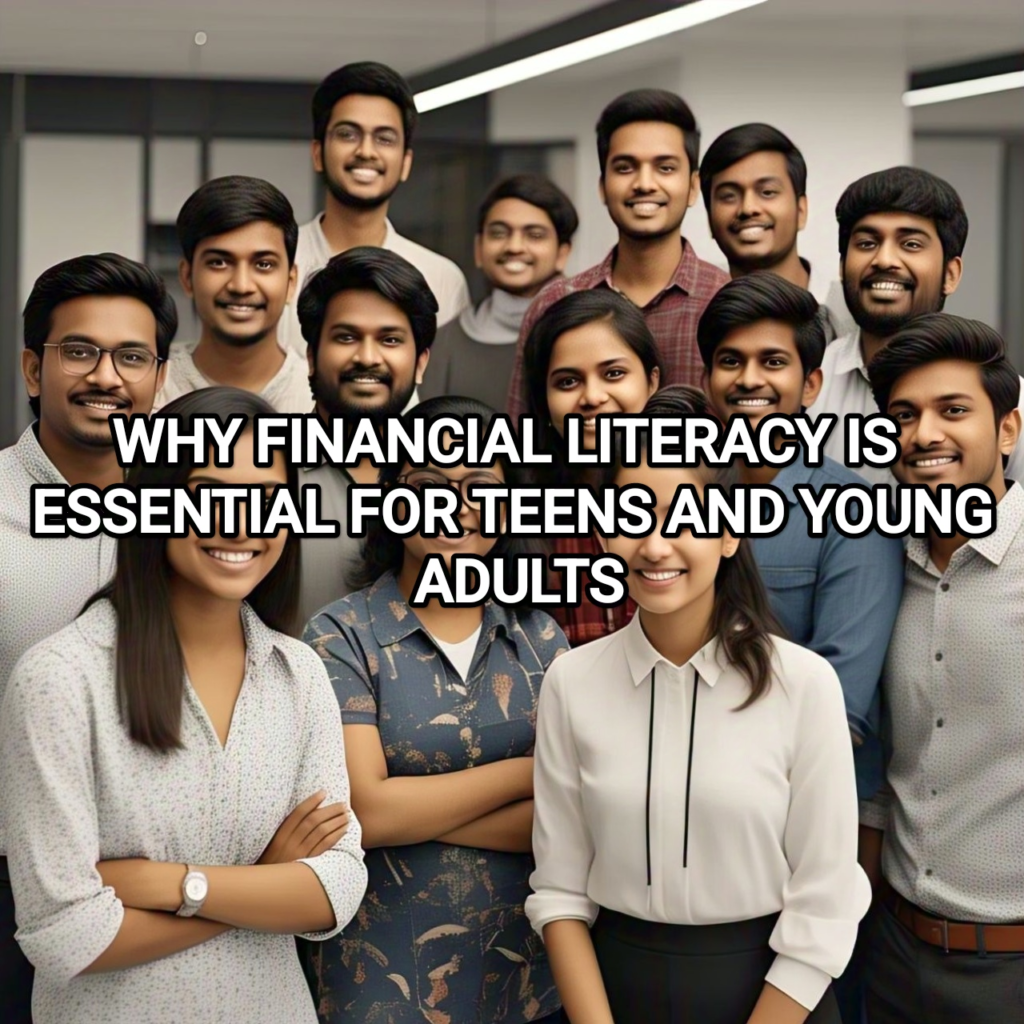
Financial literacy is a vital skill that is essential for teens and young adults to navigate the complex financial landscape and achieve financial stability and success. In today’s economy, financial literacy is no longer a luxury, but a necessity. Without a solid understanding of personal finance, teens and young adults are vulnerable to financial pitfalls, such as debt, financial stress, and limited economic opportunities.
REASONS WHY FINANCIAL LITERACY IS ESSENTIAL FOR TEENS AND YOUNG ADULTS
1. Informed Decision-Making: Financial literacy empowers teens and young adults to make informed decisions about their financial resources. By understanding financial concepts, they can evaluate options, weigh risks, and make choices that align with their goals.
2. Financial Independence: Financial literacy enables teens and young adults to take control of their financial lives. By managing their finances effectively, they can achieve financial independence, reduce their reliance on others, and make their own financial decisions.
3. Avoiding Financial Pitfalls: Financial literacy helps teens and young adults avoid common financial pitfalls, such as overspending, debt accumulation, and investment scams. By understanding financial concepts, they can navigate the financial landscape and avoid costly mistakes.
4. Building Wealth: Financial literacy is critical for building wealth over time. By understanding investing concepts, teens and young adults can make informed decisions about their investments and grow their wealth.
5. Reducing Financial Stress and Anxiety: Financial literacy can help reduce financial stress and anxiety among teens and young adults. By understanding financial concepts and having a plan, they can feel more confident and in control of their finances.
6. Improving Economic Opportunities: Financial literacy can improve economic opportunities for teens and young adults. By understanding financial concepts, they can make informed decisions about education, career, and entrepreneurship, and increase their earning potential.
7. Developing Healthy Financial Habits: Financial literacy helps teens and young adults develop healthy financial habits, such as saving, budgeting, and investing. By developing these habits early, they can set themselves up for long-term financial success.
8. Navigating the Financial System: Financial literacy enables teens and young adults to navigate the financial system with confidence. By understanding financial concepts, they can access financial services, such as banking, credit, and investments, and make informed decisions about their financial resources.
9. Building Credit and Credit Scores: Financial literacy helps teens and young adults understand the importance of building credit and maintaining good credit scores. By understanding how credit works, they can make informed decisions about credit cards, loans, and other financial products.
10. Preparing for the Future: Financial literacy prepares teens and young adults for the future. By understanding financial concepts, they can plan for long-term goals, such as retirement, and make informed decisions about their financial resources.
PRACTICAL STRATEGIES FOR EMPOWERING FINANCIAL LITERACY
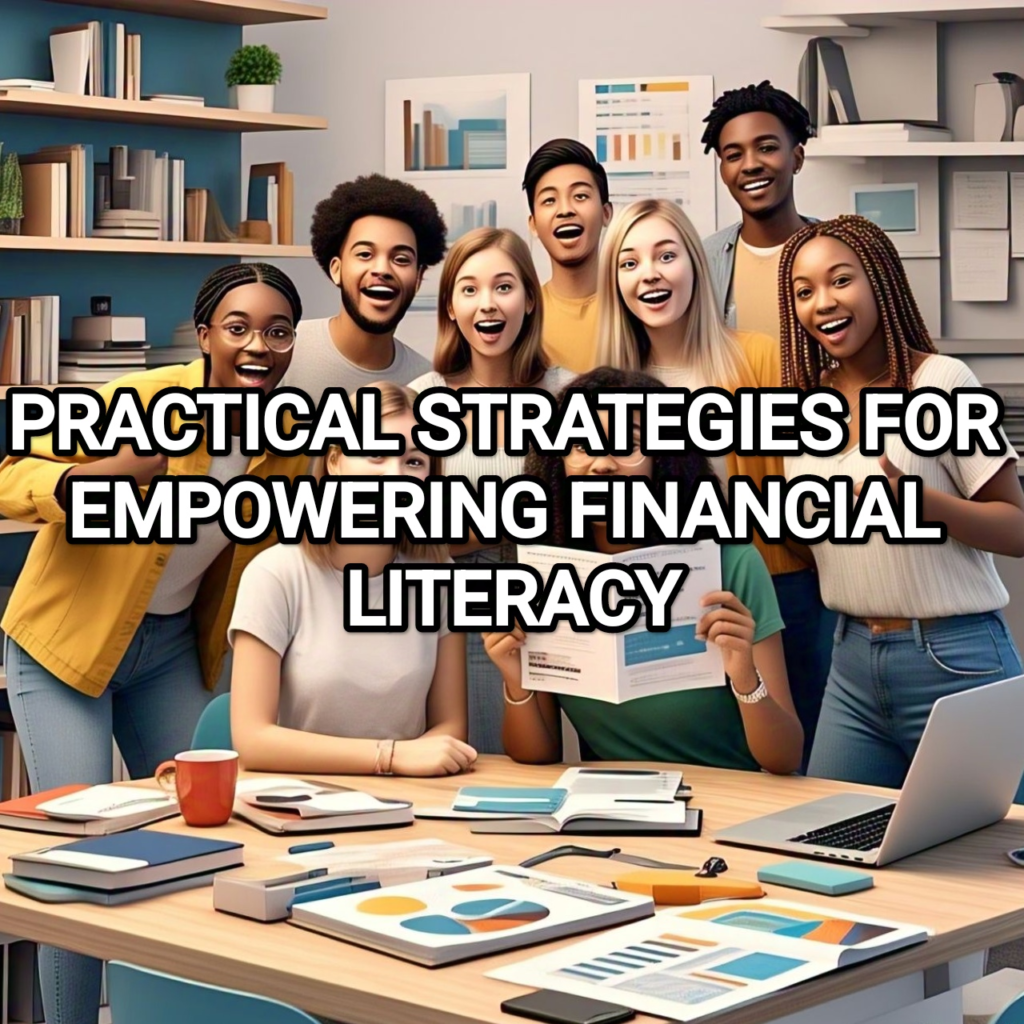
Empowering financial literacy among teens and young adults requires a comprehensive approach that incorporates practical strategies, real-world examples, and interactive learning experiences. Here are some practical strategies for empowering financial literacy:
1. Start Early: Introduce Financial Literacy Concepts at a Young Age
Introducing financial literacy concepts at a young age can help teens and young adults develop healthy financial habits and a strong foundation in personal finance. Parents, educators, and caregivers can use age-appropriate resources, such as children’s books, games, and activities, to teach basic financial concepts, such as saving, spending, and sharing.
2. Make it Interactive: Use Games, Simulations, and Real-World Examples
Interactive learning experiences can help teens and young adults engage with financial literacy concepts in a fun and meaningful way. Games, simulations, and real-world examples can be used to teach complex financial concepts, such as budgeting, investing, and credit management.
3. Focus on Real-World Scenarios: Use Everyday Situations to Teach Financial Literacy Concepts
Using everyday situations to teach financial literacy concepts can help teens and young adults see the relevance and importance of financial literacy in their daily lives. Real-world scenarios, such as paying for college, managing debt, and saving for retirement, can be used to teach financial literacy concepts in a practical and applicable way.
4. Provide Access to Financial Resources: Offer Budgeting Tools, Savings Accounts, and Investment Opportunities
Providing access to financial resources can help teens and young adults develop healthy financial habits and achieve their financial goals. Budgeting tools, savings accounts, and investment opportunities can be used to teach financial literacy concepts, such as budgeting, saving, and investing.
5. Encourage Financial Planning: Help Teens and Young Adults Set Financial Goals and Create a Plan to Achieve Them
Encouraging financial planning can help teens and young adults develop a long-term perspective and achieve their financial goals. Helping teens and young adults set financial goals and create a plan to achieve them can be a powerful way to empower financial literacy and promote financial stability.
6. Foster a Growth Mindset: Encourage Teens and Young Adults to View Financial Literacy as a Lifelong Learning Process
Fostering a growth mindset can help teens and young adults view financial literacy as a lifelong learning process. Encouraging teens and young adults to ask questions, seek feedback, and learn from their mistakes can be a powerful way to empower financial literacy and promote financial stability.
7. Leverage Technology: Use Mobile Apps, Online Resources, and Social Media to Teach Financial Literacy Concepts
Leveraging technology can be a powerful way to teach financial literacy concepts and promote financial stability. Mobile apps, online resources, and social media can be used to provide teens and young adults with access to financial education, budgeting tools, and investment opportunities.
8. Provide Opportunities for Hands-on Experience: Offer Internships, Volunteer Opportunities, and Entrepreneurial Experiences
Providing opportunities for hands-on experience can be a powerful way to empower financial literacy and promote financial stability. Internships, volunteer opportunities, and entrepreneurial experiences can provide teens and young adults with real-world experience and help them develop practical financial skills.
9. Encourage Parental Involvement: Engage Parents and Caregivers in Financial Literacy Education
Encouraging parental involvement can be a powerful way to empower financial literacy and promote financial stability. Engaging parents and caregivers in financial literacy education can help teens and young adults develop healthy financial habits and achieve their financial goals.
10. Evaluate and Refine: Continuously Evaluate and Refine Financial Literacy Programs and Resources
Evaluating and refining financial literacy programs and resources can help ensure that they are effective and relevant. Continuously evaluating and refining financial literacy programs and resources can help identify areas for improvement and ensure that teens and young adults receive the financial education and support they need to achieve financial stability and success.
By implementing these practical strategies, we can empower financial literacy among teens and young adults and help them develop the knowledge, skills, and habits they need to achieve financial stability and success.
COMMON PAIN POINTS AND SOLUTIONS

Empowering financial literacy for teens and young adults is crucial for their financial well-being and stability. However, there are common pain points that can hinder the effectiveness of financial literacy programs and resources. In this section, we’ll explore these common pain points and provide strategies for overcoming them.
Pain Point 1: Limited Access to Financial Education
Many teens and young adults lack access to comprehensive financial education. This can be due to various factors, such as limited resources, lack of qualified educators, or inadequate curriculum.
STRATEGIES FOR OVERCOMING:
1. Online Resources: Utilize online resources, such as websites, blogs, and social media platforms, to provide accessible financial education.
2. Partnerships and Collaborations: Collaborate with financial institutions, non-profit organizations, and community groups to provide financial education and resources.
3. Incorporating Financial Literacy into School Curriculum: Advocate for the inclusion of comprehensive financial literacy programs in school curricula.
Pain Point 2: Complexity of Financial Concepts
Financial concepts can be complex and overwhelming, making it difficult for teens and young adults to understand and apply them.
STRATEGIES FOR OVERCOMING:
1. Simplifying Financial Concepts: Use simple, clear language and relatable examples to explain complex financial concepts.
2. Interactive Learning: Utilize interactive learning tools, such as games, simulations, and quizzes, to make financial education engaging and fun.
3. Real-World Applications: Use real-world examples and case studies to illustrate the practical application of financial concepts.
Pain Point 3: Lack of Engagement and Motivation
Teens and young adults may lack engagement and motivation to learn about personal finance, viewing it as boring or irrelevant.
STRATEGIES FOR OVERCOMING:
1. Making it Relevant: Connect financial education to real-life scenarios and goals, such as saving for college or a car.
2. Gamification: Incorporate game design elements and competition to make financial education engaging and fun.
3. Incentives: Offer incentives, such as rewards or recognition, for completing financial education programs or achieving financial milestones.
Pain Point 4: Limited Financial Resources
Teens and young adults may have limited financial resources, making it difficult for them to practice financial concepts and build wealth.
STRATEGIES FOR OVERCOMING:
1. Simulated Financial Scenarios: Use simulated financial scenarios or virtual labs to practice financial concepts without risking real money.
2. Micro-Grant Programs: Offer micro-grant programs or small loans to help teens and young adults build credit and gain financial experience.
3. Financial Planning Tools: Provide access to financial planning tools, such as budgeting apps and investment simulators, to help teens and young adults make informed financial decisions.
Pain Point 5: Lack of Support and Guidance
Teens and young adults may lack support and guidance in their financial journey, leading to confusion and uncertainty.
STRATEGIES FOR OVERCOMING:
1. Mentorship Programs: Establish mentorship programs that pair teens and young adults with experienced financial professionals or mentors.
2. Financial Coaching: Offer financial coaching or counseling services to provide personalized guidance and support.
3. Online Communities: Create online communities or forums where teens and young adults can connect with peers, ask questions, and share experiences.
By acknowledging and addressing these common pain points, we can create more effective financial literacy programs and resources that empower teens and young adults to take control of their financial lives.
FREQUENTLY ASKED QUESTIONS
Q1: Why is financial literacy important for teens and young adults?
A: Financial literacy is crucial for teens and young adults to make informed decisions about their financial resources, avoid debt, and build wealth.
Q2: How can I teach financial literacy to teens and young adults?
A: You can teach financial literacy through interactive and engaging methods, such as games, simulations, and real-world examples.
Q3: What are some essential financial literacy concepts for teens and young adults?
A: Essential financial literacy concepts include budgeting, saving, investing, credit management, and financial goal-setting.
Q4: How can I make financial literacy relevant and engaging for teens and young adults?
A: You can make financial literacy relevant and engaging by connecting it to their real-life goals and interests, using interactive learning methods, and providing incentives and rewards.
Q5: What are some common pain points or challenges in teaching financial literacy to teens and young adults?
A: Common pain points include limited access to financial education, complexity of financial concepts, lack of engagement and motivation, limited financial resources, and lack of support and guidance.
Q6: How can I assess the effectiveness of financial literacy programs or resources for teens and young adults?
A: You can assess the effectiveness of financial literacy programs or resources by evaluating knowledge retention, behavioral changes, and financial outcomes.
Q7: What are some recommended resources for teaching financial literacy to teens and young adults?
A: Recommended resources include the National Endowment for Financial Education (NEFE), the Financial Consumer Agency of Canada (FCAC), and the Jumpstart Coalition.
Q8: How can I involve parents and caregivers in teaching financial literacy to teens and young adults?
A: You can involve parents and caregivers by providing them with resources and support, encouraging them to model healthy financial behaviors, and engaging them in financial literacy education.
Q9: What are some common misconceptions or myths about financial literacy for teens and young adults?
A: Common misconceptions include the idea that financial literacy is only for adults, that it’s too complex or boring, or that it’s not relevant to their lives.
Q10: How can I make financial literacy a lifelong learning process for teens and young adults?
A: You can make financial literacy a lifelong learning process by providing ongoing education and support, encouraging continuous learning and skill-building, and promoting a growth mindset.
CONCLUSION
As we conclude our discussion on empowering financial literacy for teens and young adults, it is clear that this is a critical issue that requires immediate attention. The benefits of financial literacy are numerous, and it is essential that we provide teens and young adults with the knowledge, skills, and resources they need to make informed financial decisions.
Financial literacy is not just a matter of personal finance; it has far-reaching implications for individuals, communities, and society as a whole. By empowering teens and young adults with financial literacy, we can help them achieve financial stability, reduce debt, and build wealth. We can also promote financial inclusion, reduce economic inequality, and foster a more stable and prosperous economy.
However, despite the importance of financial literacy, many teens and young adults lack access to comprehensive financial education. This is a call to action for policymakers, educators, parents, and caregivers to work together to provide teens and young adults with the financial literacy education they need.
RECOMMENDATIONS FOR ACTION
1. Integrate Financial Literacy into School Curricula: Policymakers and educators should work together to integrate comprehensive financial literacy education into school curricula, starting from elementary school and continuing through high school and post-secondary education.
2. Provide Access to Financial Resources: Financial institutions, non-profit organizations, and community groups should provide teens and young adults with access to financial resources, such as budgeting tools, savings accounts, and investment opportunities.
3. Promote Financial Literacy in Communities: Community leaders, non-profit organizations, and financial institutions should work together to promote financial literacy in communities, through workshops, seminars, and other educational programs.
4. Support Parental Involvement: Parents and caregivers should be encouraged to take an active role in teaching financial literacy to their children, through modeling healthy financial behaviors and providing guidance and support.
5. Encourage Financial Literacy Research and Evaluation: Researchers and policymakers should work together to evaluate the effectiveness of financial literacy programs and resources, and to identify best practices for teaching financial literacy.
CALL TO ACTION
Empowering financial literacy for teens and young adults requires a collective effort from policymakers, educators, parents, caregivers, and community leaders. We must work together to provide teens and young adults with the knowledge, skills, and resources they need to make informed financial decisions.
Let us take action to empower financial literacy for teens and young adults. Let us work together to create a more financially literate and stable society. The future of our economy and the well-being of our young people depend on it.
FINAL THOUGHTS
Empowering financial literacy for teens and young adults is a critical issue that requires immediate attention. By working together, we can provide teens and young adults with the knowledge, skills, and resources they need to make informed financial decisions. Let us take action to empower financial literacy and create a more financially literate and stable society.
ABOUT AUTHOR
Shanel John is a dedicated Certified Public Accountant (CPA) at G.L.H. Accounting, specializing in Income Tax with 10 years of experience. Based in Brampton, Ontario, Canada, Shanel offers expertise in tax preparation, financial accounting, and advisory services. A certified QBO Pro Advisor, Shanel’s decade-long experience and knowledge make her a trusted figure in the accounting field.
ADDITIONAL RESOURCES
Financial Literacy: https://www.canada.ca/en/financial-consumer-agency/programs/research/review-financial-literacy-research.html

